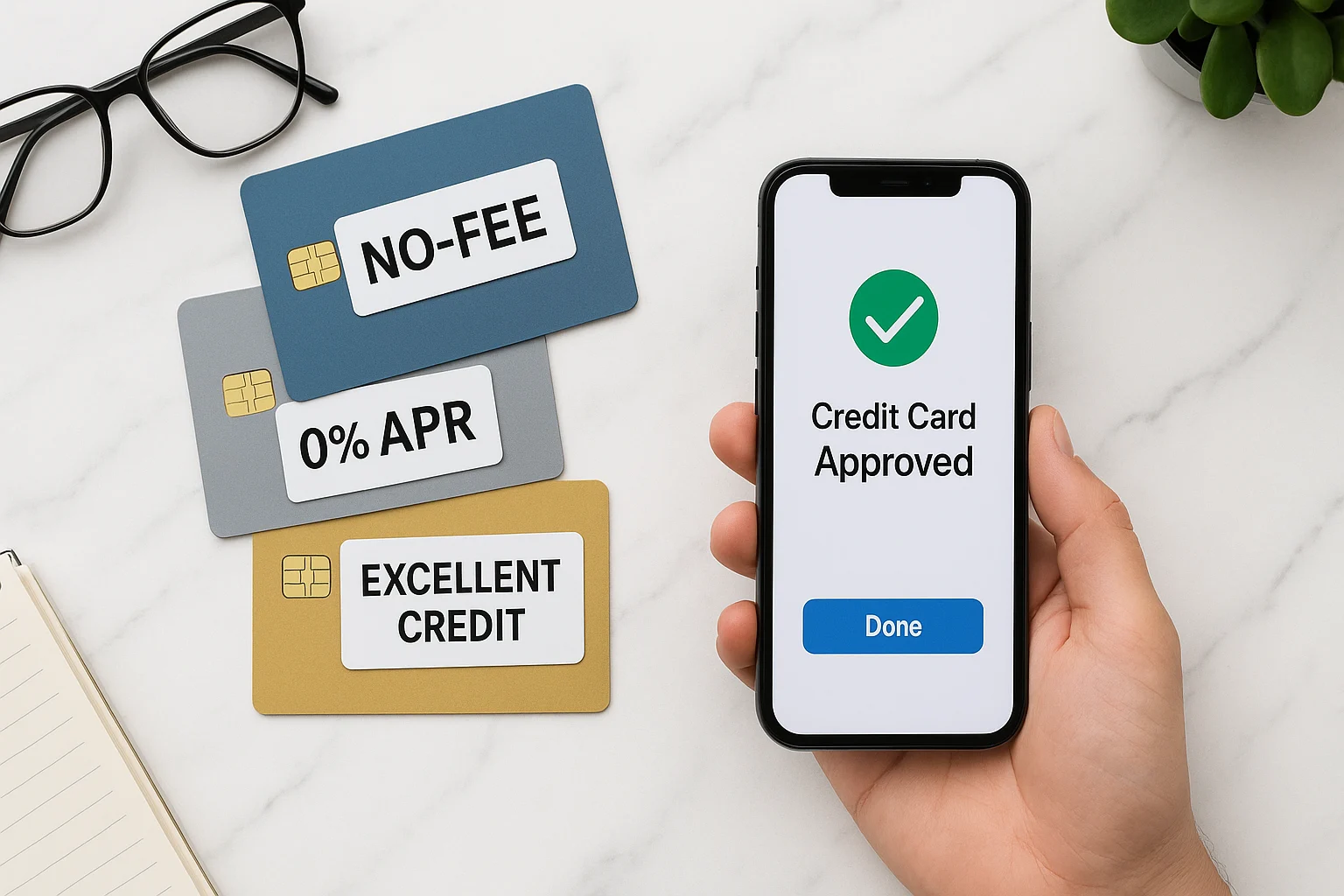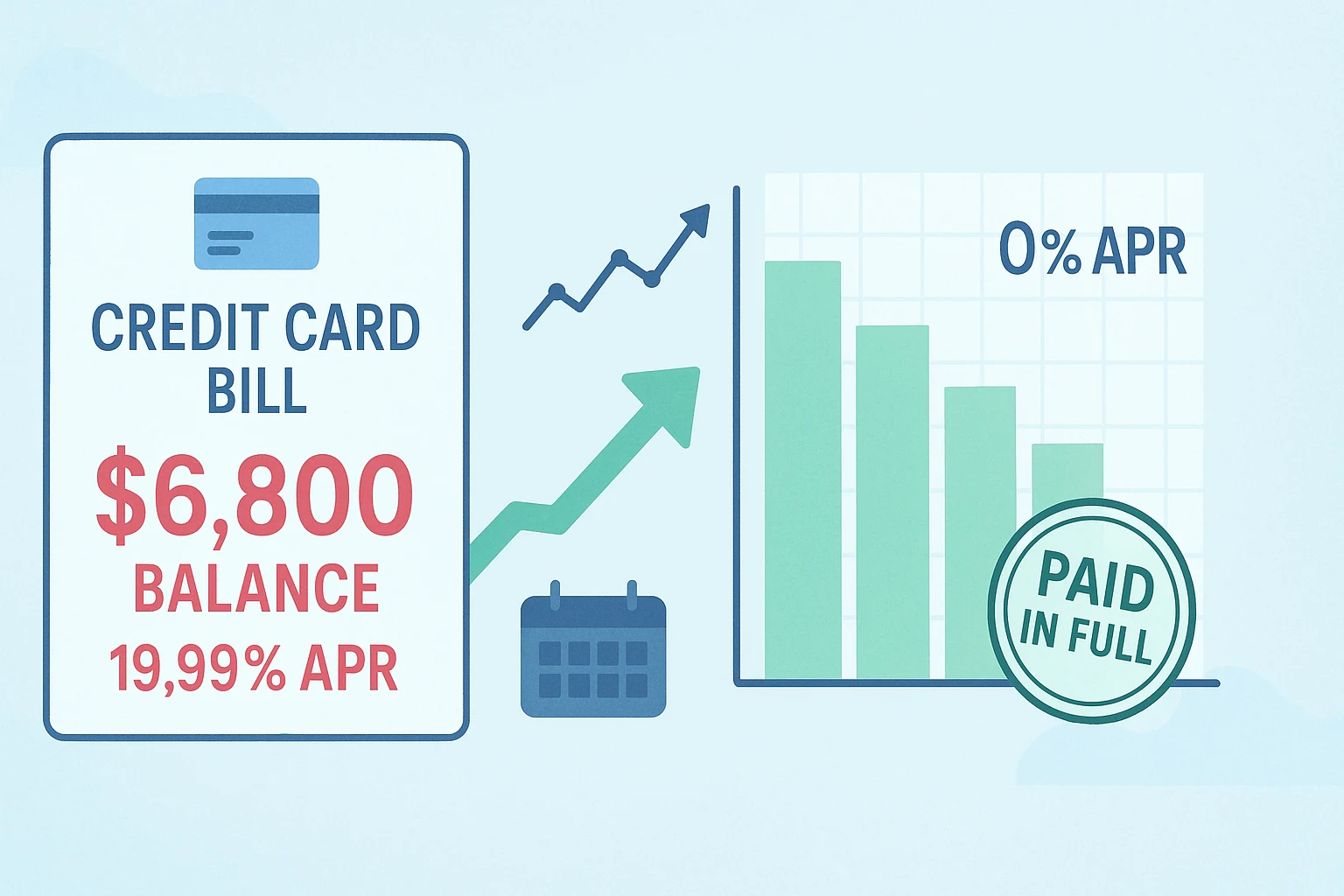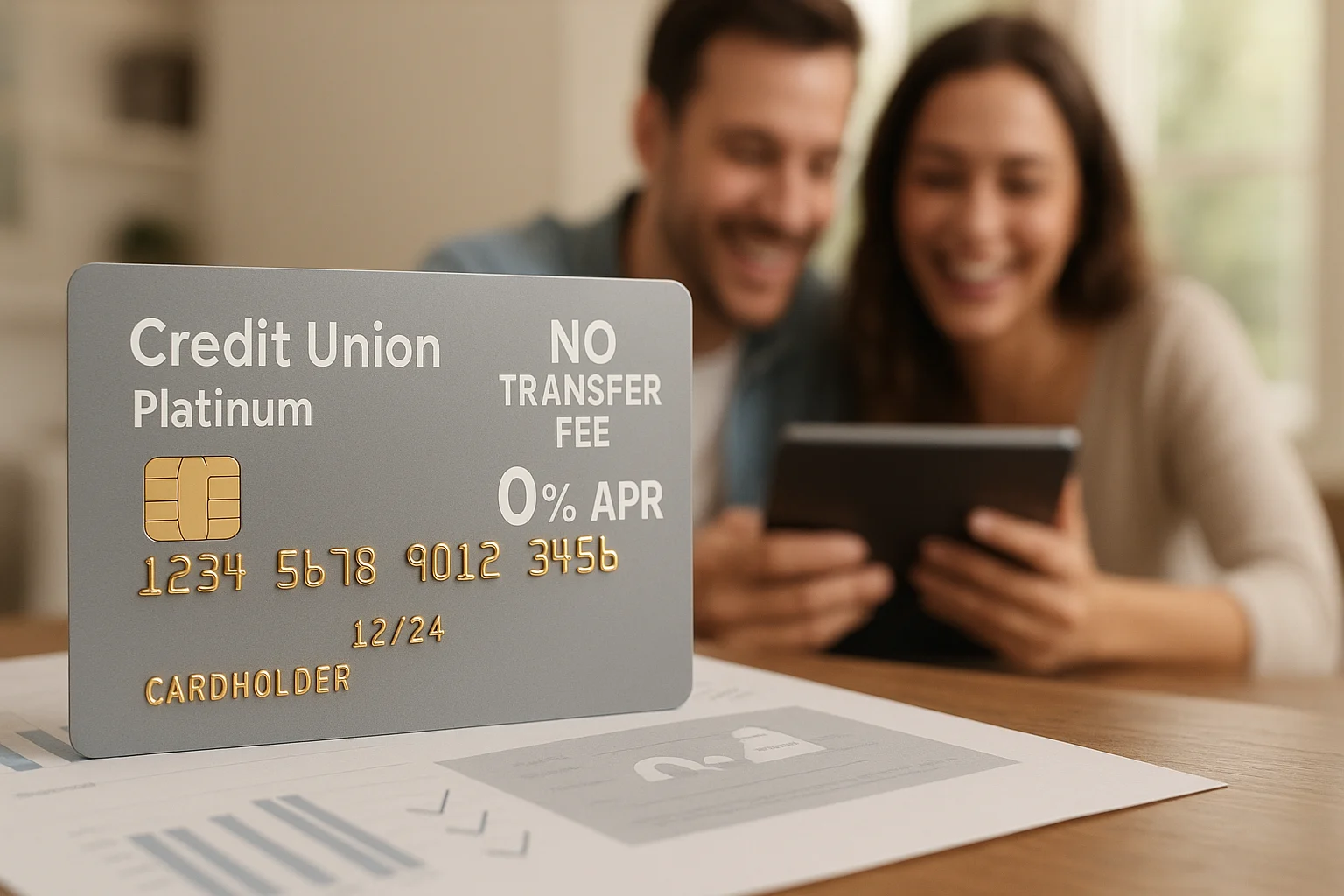
The best balance transfer credit cards no fee can crush high-interest debt without paying a transfer charge. If your credit score is top-notch (think 740+ FICO), these no-fee 0% APR offers let you consolidate balances, streamline payments, and save hundreds—or even thousands—on interest. Every dollar you pay goes straight to principal, speeding up your path to financial freedom. These promos are rare and time-limited—act when you find a good fit.
This quick guide explains how no-fee balance transfers work, who qualifies, and smart ways to use them to save more.
Find Your No-Fee Card Now!Find Your Ideal No-Fee Card with Our Interactive Tool
Explore no-fee balance transfer options with our simple tool and estimate your savings.
Balance Transfer Card Finder
Find the best balance transfer credit cards no fee that fit your needs and estimate your savings.
| Card Name | 0% Intro APR (Months) | Regular APR | BT Fee | Annual Fee | Est. Savings* | Rating |
|---|
*Savings based on paying off the balance within the 0% intro APR period, compared to 19.99% APR.
Table of Contents
- Key Takeaways
- What is a Balance Transfer?
- Why Excellent Credit Matters for No-Fee Balance Transfers
- Benefits of the Best Balance Transfer Credit Cards No Fee
- Key Features to Look for in No-Fee Balance Transfer Cards
- Best Balance Transfer Credit Cards No Fee: Top Picks
- How to Choose the Best Balance Transfer Credit Cards No Fee
- The Balance Transfer Process: Step-by-Step
- Pitfalls to Avoid
- Find Your Ideal No-Fee Card with Our Interactive Tool
- Maximizing Your No-Fee Balance Transfer Strategy
- Frequently Asked Questions
- Conclusion
Key Takeaways
- Excellent Credit Unlocks No-Fee Cards: A FICO score of 740+ grants access to the best balance transfer credit cards no fee, often with long 0% intro APR periods.
- Maximize Interest Savings: These no-fee balance transfer cards ensure 100% of your payment reduces the principal, saving you significant interest costs.
- Prioritize Long 0% APR Periods: Aim for cards with 12–15 months of 0% intro APR to give you ample time to pay off debt.
- Strategic Debt Payoff: Plan to clear your balance before the 0% APR ends to avoid high regular APRs.
- Simplify Finances: Consolidate multiple high-interest debts into one payment with no transfer fee, streamlining your debt management.

What is a Balance Transfer?
A balance transfer moves debt from one or more credit cards (or sometimes loans) to a new card, ideally a no-fee balance transfer card with a 0% introductory APR. If you’re carrying a $6,800 balance—the average U.S. credit card debt—on a card with a 19.99% APR, a 12-month 0% APR lets every payment chip away at that $6,800, saving you about $200–$340 in interest. For current statistics, see the LendingTree 2025 credit card debt statistics.
Why Choose the Best Balance Transfer Credit Cards No Fee?
Basically, you apply for a new card, transfer your existing balances, and the issuer pays off your old cards. During the 0% APR period, no interest piles up, so your payments hit the principal faster. For instance, moving a $5,000 balance to a no-fee balance transfer with 12 months of 0% APR means your $417 monthly payment goes entirely toward the debt, unlike a 19% APR card where interest eats into your progress. 💪
Why Excellent Credit Matters for No-Fee Balance Transfers
Your credit score is like a financial superpower. An excellent score (740–850 FICO) tells lenders you’re a safe bet, unlocking rare no-fee balance transfer offers. Here’s why stellar credit helps you qualify and save:
- Access to Premium Offers: Issuers save the best balance transfer credit cards no fee and long 0% APR periods (12–15 months) for top-tier credit holders.
- Lower Regular APRs: After the intro period, excellent credit often lands lower regular APRs (e.g., 14.99%–19.99%).
- Higher Credit Limits: Higher limits let you transfer bigger balances while keeping utilization lower.
- Better Approval Odds: Fewer denials and fewer unnecessary hard inquiries.
- No-Fee Opportunities: Credit unions sometimes offer true no-fee transfers, saving you upfront costs.
Benefits of the Best Balance Transfer Credit Cards No Fee
These no-fee balance transfer cards do more than dodge interest—paired with solid budgeting, they can supercharge your savings. Here’s why they’re worth a look:
- Big Interest Savings: With 0% APR and no transfer fee, you keep more cash. For example, a $6,800 balance at 19.99% APR could rack up ~$204 in interest over a year, but a no-fee card wipes that out.
- Faster Debt Payoff: Every payment hits the principal directly, shrinking your debt quicker.
- One Easy Payment: Combine high-interest debts into a single payment, reducing missed-payment risk. 🗓️
- Better Credit Score: Lower utilization can nudge your score upward.
- Less Stress: No interest or fees means you can breathe easier.
- Extra Perks: Some credit-union cards include rewards or purchase protection.

Key Features to Look for in No-Fee Balance Transfer Cards
Choosing the right card means checking a few details to maximize savings:
No Balance Transfer Fee 💰
No-fee cards are hard to find, often offered by credit unions like Navy Federal (e.g., Platinum Card: 0% fee, 0.99% intro APR for 12 months). Verify the fee is truly $0.
Length of 0% Intro APR Period ⏳
A longer 0% APR period gives you more time. No-fee offers typically run 12–15 months (vs. 18–21 for fee-based cards).
Regular APR After Intro Period 📈
If you don’t clear the balance before the promo ends, the regular APR kicks in. Aim for low-to-mid teens with excellent credit.
No Annual Fee 💳
Most no-fee balance transfer cards also skip annual fees—good for debt reduction goals.
Additional Perks ✨
Rewards, extended warranties, or purchase protection can sweeten the deal after payoff.
Best Balance Transfer Credit Cards No Fee: Top Picks
Offers change, but here are standout options to consider (always verify terms with issuers):
- The No-Fee Wonder: Navy Federal Credit Union Platinum (0% fee, 0.99% intro APR for 12 months; membership required).
- The Credit Union Gem: ESL Visa Credit Card (0% fee, 12 months 0% APR; regional membership).
- The Hybrid Option: BECU Low Rate Visa (0% fee, 12 months 0% APR) with solid long-term rates.
Note: Many no-fee cards require credit-union membership (e.g., military ties for Navy Federal, Washington residency for BECU). Check eligibility before applying.
How to Choose the Best Balance Transfer Credit Cards No Fee
With excellent credit, you’ve got plenty of options. Here’s how to pick the right no-fee balance transfer card for your needs:
- Calculate Payoff Time: Divide your debt by your monthly payment to estimate payoff months. For example, $6,800 ÷ $567/month = 12 months.
- Match 0% APR Period: Choose a card with a 0% period equal to or longer than your timeline.
- Confirm No Fees: Double-check balance transfer and annual fees are $0.
- Check Credit Limits: Ensure the limit covers your transfer so utilization stays low.
- Read Terms: Verify the promo duration, regular APR, and any membership requirements.

The Balance Transfer Process: Step-by-Step
Once you’ve picked one of the best balance transfer credit cards no fee, here’s how to make it happen:
- Apply for the Card: Submit your application online or in person.
- Request the Transfer: During the application, provide the accounts and amounts to move.
- Await Approval: Issuer pays off old cards, typically within 1–3 weeks.
- Confirm Transfer: Verify balances hit $0; keep paying old cards until confirmed.
- Pay Strategically: Make consistent payments to clear the balance before the promo ends; set up autopay.
Pitfalls to Avoid
These no-fee balance transfer offers are powerful, but watch out for these common traps:
- Missing Payments: A missed payment can end your 0% APR early. Use autopay. 🚨
- New Spending: Avoid purchases during the promo; new charges may accrue interest.
- Short Payoff Window: No-fee promos are usually 12–15 months; plan to pay off fast.
- Credit Score Impact: Expect a small, temporary dip from the hard inquiry.
- Membership Restrictions: Some issuers require specific eligibility (e.g., military, residency).
Maximizing Your No-Fee Balance Transfer Strategy
To make the most of your card, try these strategies to boost savings and stay on track. Combining a no-fee transfer with smart debt payoff methods can help you become debt-free faster:
- Create a Payoff Plan: Calculate a payment that clears the balance before the promo ends (e.g., $6,800 ÷ $567/month = 12 months).
- Automate Payments: Set autopay for at least the minimum—ideally your full payoff amount.
- Avoid New Debt: Pause spending on both old and new cards until the balance is gone.
- Consider a Second Transfer: For large debts, plan a second no-fee transfer if needed.
- Use Rewards Afterward: Once paid off, consider rewards on new purchases—paid in full monthly.
Frequently Asked Questions
Conclusion
Your excellent credit opens the door to the best balance transfer credit cards no fee, helping you save on interest and fees while speeding up your debt payoff. By moving high-interest debt to a 0% APR, no-fee card, you can simplify your finances and get closer to financial freedom. Since no-fee offers, often from credit unions, are rare and time-sensitive, check out your options and apply today to start saving!
This content is for informational purposes only and not financial advice. Consult a professional before making financial decisions.

